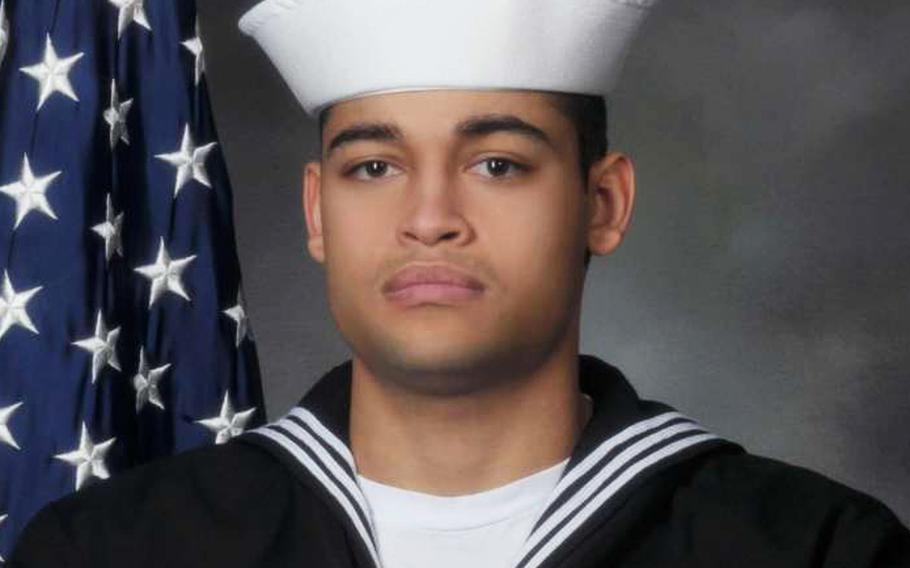
Gabriel Romero (U.S. Navy)
WASHINGTON — Navy investigators said they were unable to determine why Seaman Gabriel A. Romero shot three civilians at Pearl Harbor Naval Shipyard in December before turning the gun on himself despite the sailor displaying a number of risk factors leading up to the incident, according to a report released Tuesday.
“The evidence does not establish with certainty why Romero chose to shoot three civilians and kill himself, but it does show that he had several stressors in his life in the months leading up to the shooting that, when taken together, likely led him to choose violence. No effective formula exists to predict violent behavior with any level of accuracy,” the report states.
The Navy’s 190-page redacted report of the investigation examined the shooting on Dec. 4, 2019, the mental health of the 22-year-old Romero, the mental health services at the base and the command climate of his ship. The investigation was completed in March and approved in July by Adm. Mike Gilday, the chief of naval operations.
Romero, a machinist’s mate auxiliary fireman, was assigned to the USS Columbia, a fast attack submarine that was in dry dock at Pearl Harbor Naval Shipyard for maintenance. On the day of the shooting, Romero was on a security patrol during which he had to carry an M-4 rifle and an M-9 pistol. The report states once he was given his weapons, he told the other sailor standing watch, “I’ll be back,” before walking along the dry dock that surrounded the submarine.
Three civilians had left their workstations and were walking on the dry dock when Romero passed them, then turned around and approached them from behind. He chambered a round in his rifle and then shot them, according to the report. Two of the civilians would later die of their wounds and the third was transported to a hospital and released.
After shooting the civilian workers, Romero then used the pistol to shoot himself and died at the scene. Security forces responded to the scene within one minute and medical services responded within six minutes, according to the report.
“The shooting only lasted a few seconds from beginning to end,” the report states.
Romero was considered an “insider threat,” according to the report, and the investigators determined he had “long-developing problems that in aggregate should have raised concerns about his mental condition, and his maturity, stability, and dependability.”
The report also concludes if the risk factors had been shared between medical professionals and his chain of command, the shooting might have been prevented.
Leading up to the shooting, Romero had received 10 counseling papers — the second most in the command -- for poor work performance and being late to his duties, including a formal counseling for his tardiness the day before the shooting. At the counseling session, Romero became emotional and began to cry, the report states.
The report also states nine days before the shooting on Nov. 26, Romero found out he had also not passed an exam to be promoted to the rank of E-4 or petty officer third class.
Romero also had shown signs of stress and isolation from his shipmates in the months before the shooting. He had been referred to the base’s embedded mental health program and was diagnosed with “phase of life problems” and “unspecified problem related to unspecified psychosocial circumstances.”
Romero attended several individual therapy sessions for the three months leading up to the shooting, but only with a behavioral health technician and not the clinic’s psychologist. He never expressed threats of violence or suicidal thoughts during his visits, according to the report.
“No one could not have reasonably predicted Romero’s violent behavior on Dec. 4, 2019, but he did demonstrate potential risk indicators that should have been reported to supervisors,” the report states.
Investigators concluded the mental health clinic had underdiagnosed Romero’s mental health condition, did not properly manage his mental health during his visits to the clinic, and did not work with his command to let them know about his ability to do his job.
“Romero showed signs of an undiagnosed mental disorder that likely would have disqualified him from submarine duty,” the report states. “Romero’s care and the…data indicate a potential pattern of underdiagnosis to maintain patients on submarine duty.”
Another finding in the report states Romero should have been rescreened to determine if he could work on patrol watch due to several risk factors including isolation, poor work performance, repeat counseling and his mental health.
The investigators found the command climate of Romero’s submarine was below average compared to other submarines. They also found his command’s surveys and assessments showed “shortfalls with monitoring and addressing the well-being, morale, and stress levels of the crew.”
At the end of the report, an entire section titled “accountability” is redacted except for four bullet points, using the citation for protecting personal privacy. The redacted report does not reveal who could be held administratively responsible for missteps leading up the shooting and the response afterwards.